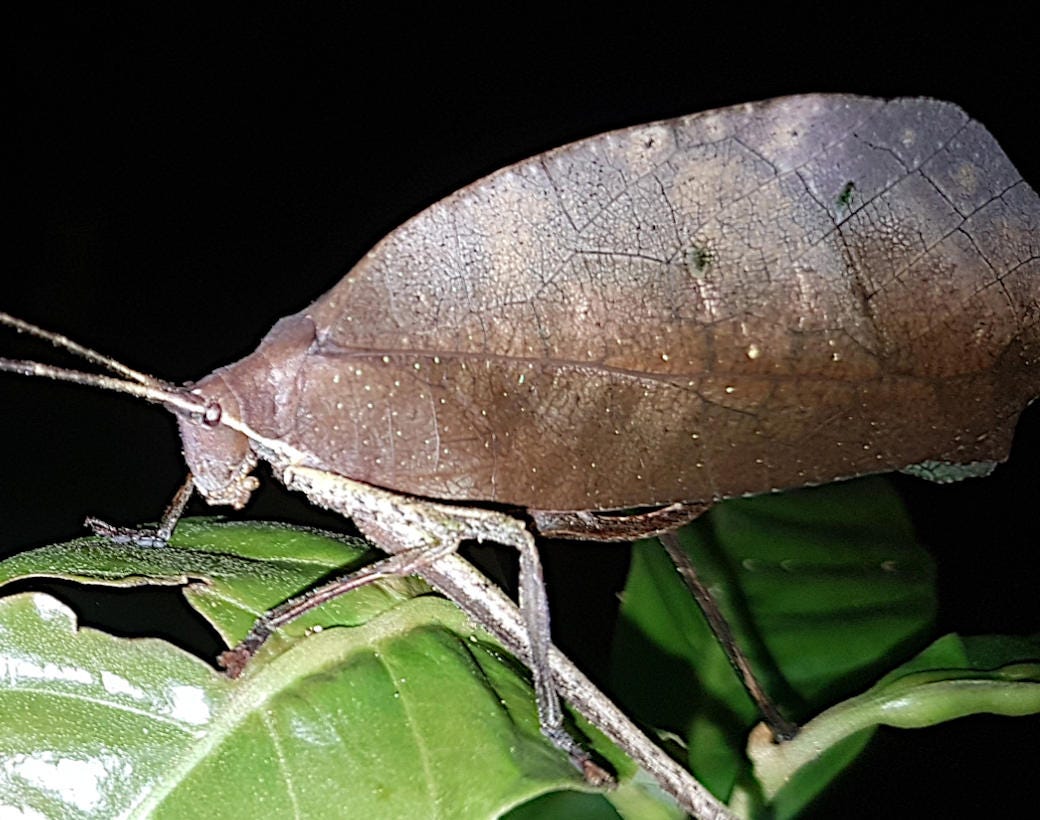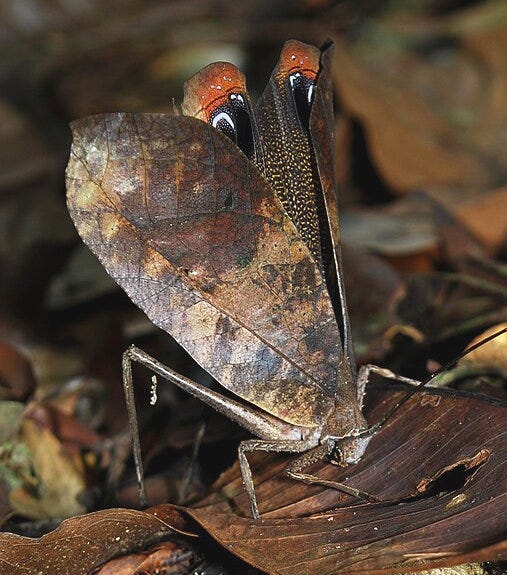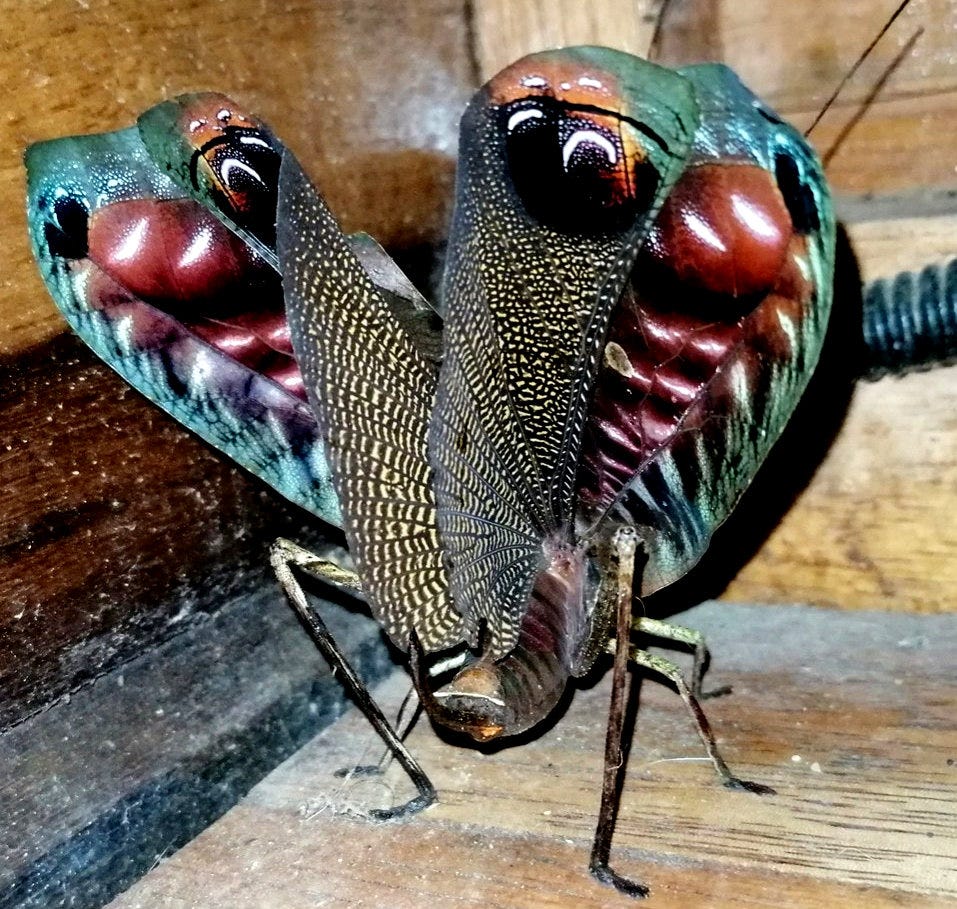The Peacock Katydid. Hiding in the South American rainforest, a cricket that takes the job of hiding fantastically seriously. Until it doesn’t.
Insects (and other invertebrates, to be fair) that mimic plant matter as a means of camouflage are all over the place in Nature. Often - usually, I’ll say, but definitely not always - it’s defensive: a way of hiding in plain sight to avoid the attention of predators. And many, many of these animal plant-mimics are just astonishingly effective at it.
Such as the Peacock katydid, Pterochroza ocellata, a South American cricket that is a frankly awesome mimic of a dead leaf:
I mean, look at that. You can see the veining on the leaf. Spots of localized damage or decay. It’s a fantastic imitation. Easily good to enough to trick the eye on cursory examination.
Why, then is it not called the Dead-leaf Katydid, but the Peacock Katydid? Because defensive mimicry like this, camouflage, is not a perfect defence. The rainforest, where this katydid lives, is full of predators - monkeys, birds etc. - that are perceptive, experienced, skilled. So sometimes even exceptional camouflage fails and you are about to get grabbed and eaten. At which point the Peacock katydid reveals its secret weapon, which looks like this, as it begins, when seen from the front…
(Photo credit at footnote 1 )
… but from behind it looks, remarkably enough, like this:
A sudden flash of movement and of colour, of eyespots. There’s a passing similarity to the patterning/colour of a peacock’s tail, but this is ornamentation with an entirely different purpose - not charming potential mates but trying to scare a potential predator. If all else fails, the Peacock katydid flashes this vivid and quite large image into the eyes of its predator in the hope of making it withdraw, or at least pause, giving the katydid time to escape.
It’s a startle display.
One of the best and clearest examples you could ever find of an animal that has evolved to be both incredibly, deceptively inconspicuous and the precise opposite.







That reversal of defensive strategy really is remarkable.
Thanks for sharing this with us.